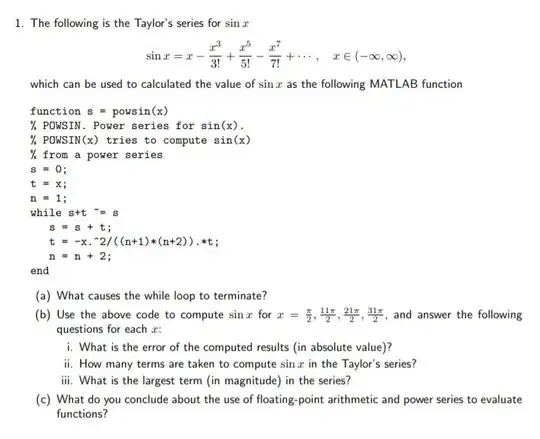Question $(b)$ is interesting.
Let us write
$$\sin(x)=\sum_{i=0}^p \frac {(-1)^n}{(2n+1)!}x^{2n+1}+\sum_{i=p+1}^\infty \frac {(-1)^n}{(2n+1)!}x^{2n+1}$$ Since it is an alternating series, the maximum error is given by the first neglected term.
So, if you want $k$ exact significant figures, you need to find $p$ such that
$$R_p=\frac {x^{2p+3}}{(2p+3)!}\leq 10^{-k}\implies (2p+3)! \geq x^{2p+3}\,10^k$$
Have a look at this question of mine; you will find a magnificent approximation provided by @robjohn, an eminent user on this site. Adapted to your problem, this would give
$${2p+3\sim ex\,\exp\left(W\left(\frac{2 k \log (10)-\log (2 \pi x)}{2 e x}\right)\right)-\frac12}$$ that is to say
$${p\sim \frac {e x} 2\exp\left(W\left(\frac{2 k \log (10)-\log (2 \pi x)}{2 e x}\right)\right)-\frac74}$$
Using it for $x=\frac \pi 6$ and $k=12$, this would give $p=4.48$ then $p=5$.
Let us try
$$R_4=\frac{ \left(\frac{\pi}{6}\right)^{11} }{11! }=2.03 \times 10^{-11} \qquad \text{while} \qquad R_5=\frac{ \left(\frac{\pi}{6}\right)^{13} }{13! }=3.57 \times 10^{-14}$$
